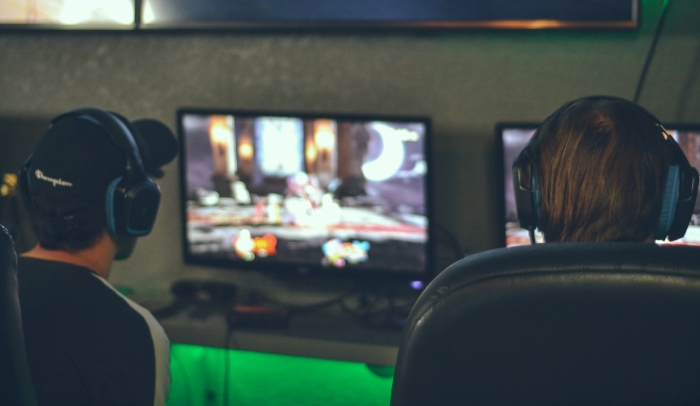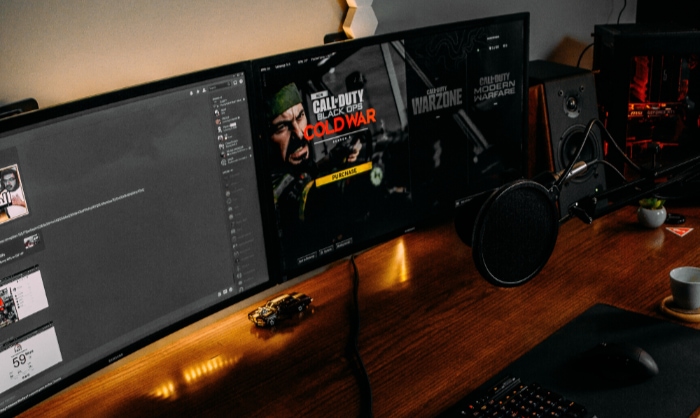FPS vs. Resolution: Which Matters More?

In the world of gaming, two critical factors that greatly influence a player's experience are FPS (Frames per Second) and resolution. Both of these elements play a pivotal role in determining the overall quality and smoothness of gameplay, making it essential for gamers to have a solid understanding of their implications.
FPS refers to the number of individual frames that are displayed per second, which affects the fluidity of motion and the player's reaction time. On the other hand, resolution determines the sharpness and clarity of the visuals, which can impact the level of immersion and detail in the gaming environment.
As gamers, it is crucial to strike the right balance between these two aspects, as they can have a significant impact on the way we experience and enjoy our favorite games.
FPS (Frames per Second)
Frames per Second, or FPS, is a crucial metric that measures the number of individual images, or frames, displayed on the screen within a one-second time span. A higher FPS results in smoother and more fluid motion, which can significantly impact the overall gaming experience.
In fast-paced games, a higher FPS allows for quicker response times and more precise control, ultimately affecting a player's performance.
The Role of FPS in Gaming
Smoothness of Motion
The fluidity of motion is directly tied to the FPS. As the FPS increases, the motion in the game appears smoother, providing a more lifelike and immersive experience. Conversely, a lower FPS can result in choppy or stuttering motion, which can be distracting and hinder gameplay.
Reaction Time
In competitive gaming, reaction time is crucial. A higher FPS ensures that players receive visual information more quickly, allowing for faster decision-making and improved reaction times. This advantage can be the difference between victory and defeat in fast-paced games.
FPS Benchmarks and Popular Gaming Standards
30 FPS
Traditionally, 30 FPS has been the standard for many console games, offering a playable experience with relatively smooth motion. However, it may not be suitable for fast-paced games or competitive play, where higher frame rates are preferred.
60 FPS
The 60 FPS benchmark has become the gold standard for PC gaming and many modern console games. This frame rate provides a significant improvement in smoothness and responsiveness over 30 FPS, enhancing the overall gaming experience.
120 FPS and Higher
For competitive gamers and enthusiasts, frame rates of 120 FPS or higher are increasingly popular. These higher frame rates offer an even more fluid and responsive experience, giving players a competitive edge in reaction times and precision.
Factors Affecting FPS
Hardware
The most critical factor affecting FPS is the hardware used to run the game, such as the graphics card (GPU), processor (CPU), and available memory (RAM). More powerful hardware can render frames more quickly, resulting in higher frame rates.
Game Optimization
Game developers play a crucial role in determining the FPS achievable in a game. Proper optimization of the game engine and graphical assets can help maximize performance and ensure smoother gameplay.
Graphical Settings
Adjusting the in-game graphical settings can have a significant impact on FPS. Lowering settings such as texture quality, anti-aliasing, and draw distance can help boost frame rates, but may result in a visual trade-off.
Resolution
Resolution refers to the number of pixels displayed on a screen, typically represented as a combination of horizontal and vertical pixel counts, such as 1920×1080. In gaming, higher resolutions result in sharper and more detailed visuals, enhancing the overall quality and immersion of the gaming experience.
The Importance of Resolution in Gaming
Visual Quality
Higher resolutions provide more pixel density, resulting in a clearer and more detailed image. This increased visual quality can enhance the gaming experience by providing more realistic textures, improved lighting, and refined character models, making the virtual world feel more lifelike.
Immersion
A higher resolution can also contribute to a greater sense of immersion within the game world. Crisper visuals and increased detail allow players to become more engrossed in the environment, making it easier to suspend disbelief and fully engage with the game's narrative and mechanics.
Common Resolutions and Their Impact on Gaming Experience

720p (HD)
720p, or 1280×720 pixels, is considered High Definition (HD) and was once a popular resolution for gaming. While it offers a decent level of visual quality, it may appear pixelated or blurry on larger screens, potentially detracting from the gaming experience.
1080p (Full HD)
Full HD, or 1920×1080 pixels, has become the standard resolution for most PC and console games in recent years. It offers a significant improvement in visual quality compared to 720p, delivering a sharper image and more detailed textures, especially on larger screens.
1440p (2K)
2K resolution, or 2560×1440 pixels, is an increasingly popular choice for gaming enthusiasts seeking an enhanced visual experience. This resolution offers a noticeable improvement over 1080p, providing even greater detail and clarity, particularly on high-resolution displays.
2160p (4K)
4K, or 3840×2160 pixels, is the pinnacle of gaming resolution, offering unparalleled visual quality and immersion. With four times the pixel count of 1080p, 4K gaming delivers stunningly sharp and detailed images. However, it also requires significantly more powerful hardware to maintain smooth performance.
Factors Affecting Resolution
Monitor or Display
The resolution you can achieve in gaming is directly influenced by the native resolution of your monitor or display. Investing in a higher-resolution display can dramatically improve the visual quality of your gaming experience.
Graphics Card Capabilities
To achieve higher resolutions, your graphics card must be powerful enough to handle the increased pixel count without sacrificing performance. As resolution increases, so do the demands on your GPU.
Connectivity and Bandwidth
The connection between your graphics card and monitor, such as HDMI or DisplayPort, can also impact the maximum resolution you can achieve. Ensuring that both your GPU and display support the desired resolution, as well as using compatible cables, is essential for optimal gaming performance.
Finding the Right Balance: FPS vs. Resolution
Striking the right balance between FPS and resolution involves making trade-offs between performance and visual quality. Higher resolutions demand more processing power, which can impact frame rates. Conversely, prioritizing higher frame rates may require lowering resolution or in-game settings to maintain smooth performance.
Hardware Limitations
Your hardware capabilities, such as your GPU, CPU, and monitor, can limit the balance you can achieve between FPS and resolution. Understanding your hardware's performance limits can help you make informed decisions about the optimal balance for your gaming experience.
Identifying Your Gaming Preferences and Priorities
Fast-Paced Competitive Gaming
For competitive gamers, higher frame rates are often prioritized over resolution, as the increased smoothness and responsiveness can provide a significant advantage in reaction times and precision.
Casual Gaming
Casual gamers may prefer a balance that emphasizes visual quality, opting for a higher resolution and slightly lower frame rates to enjoy more detailed and immersive visuals.
Immersive Single-Player Experiences
In single-player games with a strong focus on narrative and world-building, a higher resolution can significantly enhance immersion and enjoyment, making it a priority for some gamers.
Assessing Your Hardware Capabilities
Monitor or Display Specifications
Your monitor's native resolution and refresh rate play a crucial role in determining the balance you can achieve between FPS and resolution. Ensure your display can support your desired resolution and frame rates to optimize your gaming experience.
Graphics Card Capabilities
Your GPU's processing power directly impacts both FPS and resolution. Assess your GPU's capabilities and consider upgrading if necessary to achieve your desired balance.
System Requirements of the Games You Play
Understanding the system requirements of your favorite games can help you make informed decisions about the optimal balance between FPS and resolution, ensuring smooth and enjoyable gameplay.
Tips for Achieving the Right Balance
Adjusting In-Game Settings
Experimenting with different in-game graphical settings can help you find the perfect balance between FPS and resolution. Lowering specific settings, such as texture quality or draw distance, can help maintain smooth performance at higher resolutions.
Overclocking Your GPU
Overclocking your GPU can provide additional processing power, potentially allowing you to maintain higher frame rates at increased resolutions. However, be aware that overclocking may void warranties and carries some risk of damaging your hardware.
Upgrading Your Hardware
If you find that your current hardware cannot achieve the balance you desire, consider upgrading your GPU, monitor, or other components to enhance your gaming experience and enjoy the perfect balance between FPS and resolution.
Conclusion
Both FPS (Frames per Second) and resolution play a critical role in shaping the gaming experience, with each aspect bringing its unique benefits and trade-offs. While FPS contributes to smoothness and responsiveness, resolution enhances visual quality and immersion.
Striking the right balance between these two elements is crucial for optimizing your gaming experience and depends on personal preferences, hardware capabilities, and the types of games you play.
As gamers, it is essential to understand these differences and make informed decisions about the ideal balance for our individual needs. By experimenting with various in-game settings, assessing hardware capabilities, and prioritizing our gaming preferences, we can find the sweet spot that delivers the perfect combination of performance and visual quality.
Ultimately, this knowledge empowers us to make the most of our gaming setups and fully immerse ourselves in the worlds and adventures our favorite games offer.


